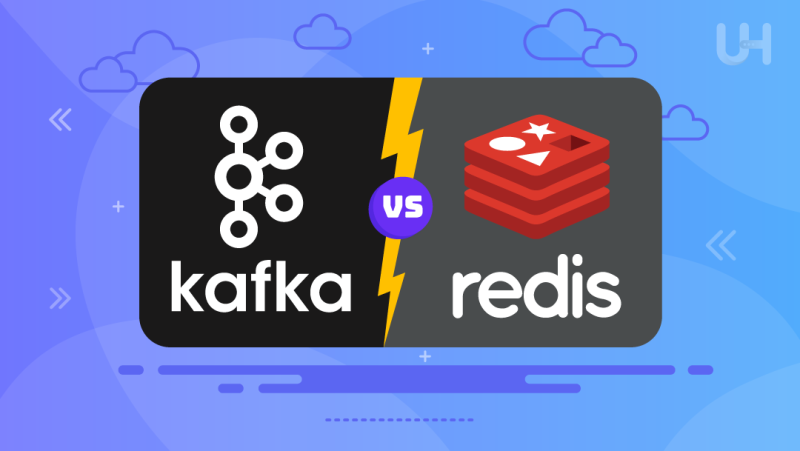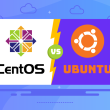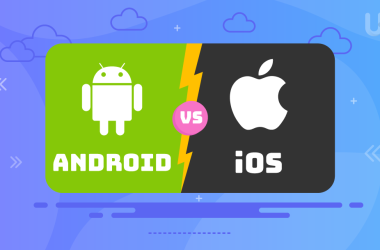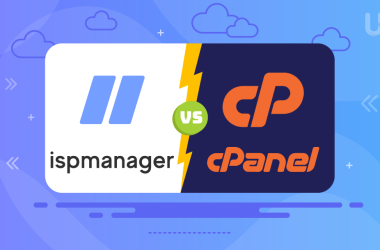With the ever-changing landscape of real-time data processing, the requirement for robust and highly scalable data streaming platforms has increased more than ever. Apache Kafka vs Redis are two critical contenders in this space.
In this article, we provide a fuller comparison between Kafka and Redis that touches on features, use cases, performance, and suitability for different applications in 2024.
Overview of Kafka and Redis
What is Kafka?
Apache Kafka is an open-source stream-processing platform accommodating real-time data processing and event streaming. It is written in Scala and Java and was developed by the Apache Software Foundation. In other words, it was created to establish one real-time, unified, high-throughput, and low-latency platform dealing with real-time data feeds. The system ingests data streams from multiple sources, processes them based on specified requirements, and then reliably and scalably distributes the processed data to many consumers.
What is Redis?
Redis is an in-memory, open-source data structure store used as a database management system and message broker. Redis is also used as a cache. Due to its fast performance and flexibility, Redis natively supports several data structures: strings, hashes, lists, sets, sorted sets, bitmaps, hyperloglogs, geospatial indexes, and streams. Redis finds application in scenarios often requiring fast or real-time data processing and analytics.
Redis vs Kafka: Core Differences
Architecture
- Kafka: The significant components of Kafka architecture include producers, consumers, topics, and brokers. Messages for the producer are published in Topics. Consumers subscribe to these topics to receive notifications. Kafka Brokers save messages while ensuring high availability and fault tolerance through replication.
- Redis: It has a master-slave architecture, where the master node processes write operations and slave nodes process read operations. Redis hosting supports clustering, which allows data partitioning across multiple nodes to improve scalability and availability.
Data Storage and Persistence
- Kafka: Kafka extensively uses durable message storage, so messages persist on a disk with configurable retention policies. These policies guarantee data persistence for a specified time or until the data reaches a specific size. This makes it applicable to use cases needing reliable and sustained data storage.
- Redis: Being an in-memory store, Redis provides very fast read and write operations. In Redis, data persistence is optional; it provides data persistence by taking snapshots (RDB) or append-only files (AOF). This makes Redis a perfect fit for apps that need high speed and can afford to lose some data in return for speed.
Performance
- Kafka: Kafka streams high volumes of data with high throughput, is scalable, and fault-tolerant. It supports millions of messages per second with latency as low as milliseconds, making it perfect for handling real-time analytics, log aggregation, and event sourcing.
- Redis: Redis is swift, having sub-millisecond response times. Also, being an in-memory solution enables handling large numbers of operations per second, so it’s perfect for caching, real-time web analytics, and leaderboard applications.
Kafka and Redis Streams
Kafka Streams
This is a Java client library that builds real-time, scalable applications and microservices—connected or standalone—that store their input and output data in Kafka clusters. It exposes a high-level Application Programming Interface for stream processing: transformation, aggregation, joining, and windowing. Due to tight integration with the Kafka functionality, it inherits its features of being highly scalable and fault-tolerant with stream processing.
Redis Streams
Redis Stream is a data structure that debuted in Redis 5.0 to handle data streams. It ingests, processes, and delivers considerable messages in chronological order. Support from Redis Streams includes consumer groups; these involve multiple clients reading messages from a stream concurrently with built-in mechanisms for message acknowledgment and fault tolerance.
Enhance Your Data Streaming Capabilities
Are you ready to enhance your data streaming capabilities? Explore VPS Hosting by UltaHost, designed to support robust and scalable infrastructures like Kafka and Redis, ensuring optimal performance for your real-time data processing needs.
Use Cases
Kafka
- Real-Time Analytics: One reason Kafka excels in real-time analytics, where significant data volumes require processing and analysis on the fly, is its ability to handle high-throughput data effectively.
- Log Aggregation: Kafka has seen high adoption in log aggregation, which involves collecting logs from different sources and storing them centrally for further analysis and monitoring.
- Event Sourcing: Kafka is durable and reliable, so it can be used for Event Sourcing. Event sourcing involves storing all changes to an application state as a sequence of events.
- Stream Processing: Lastly, Kafka Streams provides a high-level javascript framework to build real-time stream processing applications, which equips them with Kafka’s scalability and fault tolerance.
Redis
- Caching: Redis is an in-memory store with infinitely fast response times. It is great for caching frequently accessed data to lessen latency and boost application performance with a fast server.
- Real-Time Analytics: Redis Streams can power real-time analytics, allowing for the processing and analysis of data as it is being ingested by setting the stage for low latency and high throughput.
- Message Brokering: Redis can work as a message broker, helping parts of an application communicate. It supports several messaging patterns.
- Leaderboards and Counting: Redis’s data structures, such as sorted sets, make it possible to implement leaderboards, counters, and ranking systems quickly.
Performance Comparison
Latency
- Kafka: Kafka achieves high performance in most throughput dimensions and with very low latency, typically in the order of milliseconds. However, this depends on configuration and network.
- Redis: Ultra-low latency is intrinsic to Redis’s design. All its operations conclude in sub-milliseconds, which makes Redis entirely appropriate for applications where speed can prove to be a critical factor.
Scalability
- Kafka: One of the prime aspects of Kafka is that it can scale very well to many petabytes of data. On the other hand, it scales horizontally, meaning the addition of other brokers to a cluster helps in distributing the load across multiple nodes.
- Redis: It offers scalability through clustering, where the data divides across several nodes. However, scaling Redis can get more complex since it is in memory and needs efficient memory usage management.
Durability and Fault Tolerance
- Kafka: Kafka is designed for durability and fault tolerance. It comes with data replication and recovery mechanisms, persisting messages to a disk, and also recovering from failures without loss.
- Redis: Data persistence in Redis is optional and available through RDB snapshots and AOF logs. While one could set up Redis with replication and clustering for high availability, it would still fundamentally be an in-memory store. Since performance environments reprovision their hosts regularly, data durability would not be the same as Kafka.
Ease of Use and Administration
- Kafka: The setup and configuration are a bit better than in Redis. Being able to handle a Kafka cluster implies getting into brokers, topics, partitions, and consumer groups. However, the rich Kafka ecosystem regarding tools and libraries alleviates the development and monitoring process.
- Redis: While it is relatively easy to set up and use, Redis’s configuration and administration are straightforward. Its simple data model and command set make it easily usable for developers and also administrators.
Redis or Kafka: Which One to Choose?
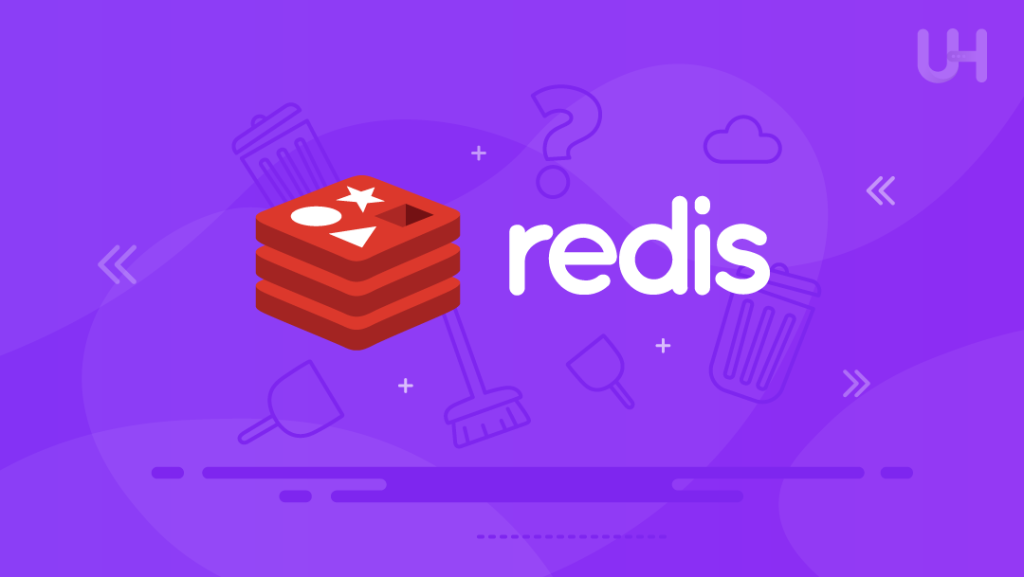
The choice between Redis and Kafka depends on the requirements of your application.
- Use Kafka if: You need high-performance, fault-tolerant, and scalable platforms for real-time data processing, log aggregation, or event sourcing. Delegations to Kafka are also excellent for complex stream processing applications where advanced transformations and aggregations should happen.
- Use Redis if: You need ultra-low latency and high-speed access, which comes in handy in scenarios with some level of tolerance for data loss. Redis is good for caching, real-time analytics, and also messaging brokering—anything that requires fast response times.
Conclusion
Kafka and Redis each have their own strengths that make them suitable for different types of applications. A high-throughput, durable data streaming and complex stream processing function—real-time analytics, log aggregation, and event sourcing—is where Kafka excels. Meanwhile, Redis strives for ultra-low latency and high-speed access to data use cases, such as caching, real-time analytics, and message brokering. This intrinsic difference and other performance characteristics may help you choose the best for your needs in 2024.
Kafka and Redis offer unique strengths for different real-time data processing needs. Enhance their performance and security with Cloudflare VPS Hosting by UltaHost. Choose the best solution for your specific requirements.
FAQ
What is the main difference between Kafka and Redis?
Kafka is designed for high-throughput, durable data streaming and real-time analytics, while Redis is an in-memory data store optimized for ultra-low latency and high-speed data access.
Which is better for real-time analytics, Kafka or Redis?
Both can be used for real-time analytics. Kafka handles high-throughput data streams and complex processing, whereas Redis excels in low-latency, high-speed operations.
Can Kafka and Redis be used together in a single application?
Yes, many applications use Kafka for data streaming and Redis for caching and fast data access, leveraging the strengths of both platforms.
Is Kafka more durable than Redis?
Yes, Kafka offers better durability with built-in mechanisms for data replication and persistence, while Redis is primarily in memory and may not provide the same level of durability.
Which platform should I choose for message brokering, Kafka or Redis?
Kafka is generally preferred for complex message brokering with high throughput requirements, whereas Redis is suitable for simpler, low-latency messaging scenarios.





